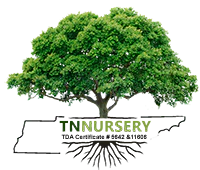Pest and Disease Control for perennial plants
As a proud garden owner, there's nothing more satisfying than watching your perennial plants thrive and bloom year after year. However, with great beauty comes great responsibility. One of the biggest challenges in maintaining a healthy garden is dealing with pests and diseases. These unwelcome visitors can quickly wreak havoc on your plants, causing them to wilt, wither, and even die. But fear not, as there are several pest and disease control tactics that you can use to keep your garden healthy and thriving.
Identifying the signs of infestation or infection early on is essential to help prevent and manage pest and disease problems. Inspect your plants for any signs of damage and take action if you notice any unusual symptoms.
Prevention Methods for Pest and Disease Control
One of the most effective prevention methods is maintaining a healthy and balanced garden ecosystem. This includes providing your plants with the right amount of water, sunlight, and nutrients, regularly removing dead plant material, and keeping the garden clean and tidy.
Another important prevention method is choosing plants resistant to pests and diseases. Before planting your garden, research the plants best suited to your area and climate, and choose varieties known for their disease resistance.
Practice good hygiene in your garden. This includes regularly sanitizing your gardening tools and equipment, removing any diseased or infected plant material from your garden, and disposing of it properly.
Natural Remedies for Pest and Disease Control
If you prefer to use natural methods to control pests and diseases, several options are available. A popular natural remedy is neem oil, derived from the seeds of the neem tree. Neem oil controls many pests, including aphids, spider mites, and whiteflies.
Another natural remedy is garlic spray, which can be made by blending garlic cloves with water and spraying the solution onto plants. Garlic spray controls pests such as aphids, cabbage loopers, and spider mites.
Natural pest and disease control remedies include insecticidal soap, diatomaceous earth, and beneficial insects such as ladybugs and praying mantises.
Chemical Treatments for Pest and Disease Control
Chemical treatments may be necessary if natural remedies are ineffective in controlling pests and diseases.
Before using any chemical treatments, carefully read the label and follow the instructions. Always wear protective clothing and equipment, and avoid using chemicals on windy days or when rain is forecasted.
Chemical pest and disease control treatments include insecticides, fungicides, and herbicides. Insecticides are used to control insect pests, while fungicides are used to control fungal diseases. Herbicides are used to control weeds.
Integrated Pest Management for Perennial Plants
IPM is a holistic approach to controlling pests and diseases that combines different methods to manage pests and diseases effectively. IPM involves:
- Monitoring the garden regularly.
- Identifying pests and diseases.
- Selecting the most appropriate control method based on the severity of the problem.
IPM also involves using cultural practices such as crop rotation, mulching, and companion planting to prevent pest and disease problems from occurring in the first place. Combining different control methods allows IPM to be more effective and less environmentally harmful than chemical treatments alone.
Signs That Indicate Pest and Disease Problems
To effectively control pest and disease problems, identify the signs of an infestation or infection early on. Some common signs of pest problems include distorted leaves, webs or cocoons, and visible insects on the plant.
Signs of disease problems include discoloration, wilting, and stunted growth. In some cases, you may also notice spots or lesions on the leaves or stems of the plant.
Tips for Maintaining Healthy Perennial Plants
To maintain healthy perennial plants, providing them with the right conditions to thrive is essential. This includes providing them with the right amount of water, sunlight, and nutrients, regularly removing dead plant material, and keeping the garden clean and tidy.
It's also important to prune your plants regularly to promote healthy growth and to remove any dead or diseased plant material. When pruning, use clean and sharp gardening tools to prevent the spread of disease.
Common Mistakes to Avoid in Pest and Disease Control
One common mistake in pest and disease control is over-reliance on chemical treatments. While chemical treatments can be effective, they should be used as a last resort and with caution.
Another common mistake is to identify the pest or disease problem correctly. It's essential to accurately identify the problem to select the most effective control method.
Finally, not practicing good hygiene in your garden can also lead to pest and disease problems. Regularly sanitize your gardening tools and equipment, and properly dispose of any diseased or infected plant material.
Conclusion and Final Thoughts
Pest and disease control can be challenging in gardening, but with the proper knowledge and tools, it's possible to maintain a healthy and thriving garden. By understanding common pests and diseases, practicing prevention methods, using natural and chemical treatments as appropriate, and practicing good hygiene, you can keep your perennial plants healthy and beautiful year after year.



















































